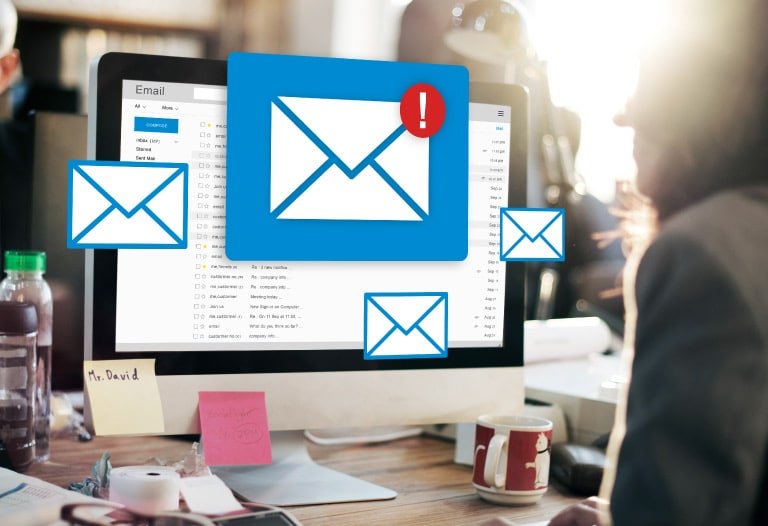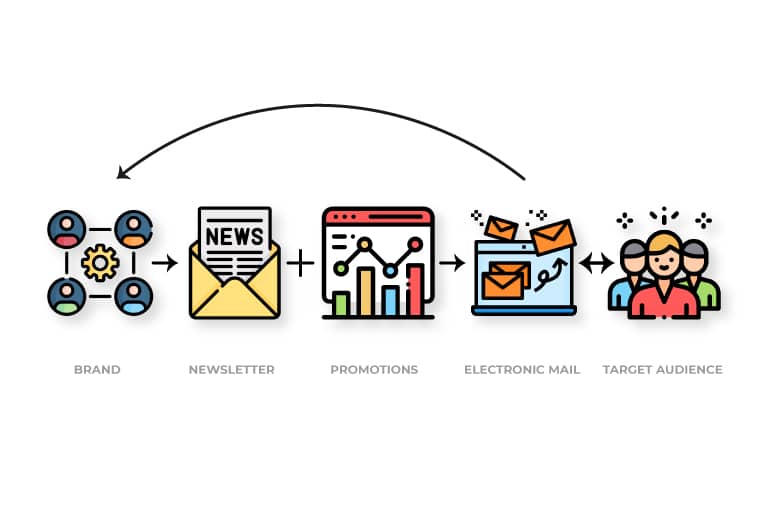
What is email marketing? The definitive guide
There are many ways in which marketing can influence our decisions. Thousands of studies have investigated and are investigating daily which are the best techniques and tools to conquer the target audience. Techniques such as affiliate marketing or sales funnels have simplified this arduous work, but today we will talk about an essential tool for any brand that has an online presence.
Without further ado, let’s find out what e-mail marketing is, the ace up the sleeve of direct marketing.
¿Qué es el email marketing?
Email marketing is a strategy of interaction with customers, in which consumers’ email addresses are used as a communication channel. Simply defined, they are mailings that are sent periodically for the purpose of:
- Increase the number of customers.
- Develop a loyal relationship with repeat buyers.
- Increase sales.
- Generate trust towards your product or service through quality content.
For this reason, we can define mail types according to their function:
- Emails to attract new customers interested in your products/services.
- Newsletters: Their objective is to maintain frequent contact with users through information related to the brand, such as offers, image changes, product launches, etcetera.
- Administrative emails: They are related to internal mail management. This type of email is the one you receive after registering on the site to thank you for your subscription and your interest.
- Loyalty emails: They seek to strengthen your relationship with people who have already purchased from the company, in order to increase their loyalty to the brand.
Of course, all of the above is entirely useful for the type of marketing that employs this method: direct marketing.
Direct marketing and email marketing
Broadly speaking, direct marketing is an advertising campaign that targets a group of people and its purpose is to produce an action.
For example, if a company publishes on their social networks that they have a promotion during a specific day for their loyal buyers, they do so in order to get them to purchase a product on that date. Consequently, in this example you can find three aspects of direct marketing:
- Advertising: The offer of the day.
- Specific group of people: Loyal buyers.
- Action they want to happen:A purchase on promotion day.
Now, when the email marketing tool is introduced, what they are looking for is that, by means of a personalized or general email to their customers, they respond:
- Logging into a site to review the business catalog, new website, related news, and so on.
- Filling out a form.
- Making a purchase, among others.
In this way, they take advantage of the database they have, in order to relate and dialogue with interested people in a precise way, which encourages their intention to buy.
However, in addition to the above, it is also very useful for measuring the results of email marketing campaigns or other advertising proposals. Clearly, through the action that is posed in the message, they can establish the effectiveness and impacts of the email.
So far, so good. But where do they get the emails from?
The most common mechanisms for collecting data and appending it to databases are purchased lists and the form on your website. Honestly, of these two, it is advisable to use the second one. If you’re wondering why not the first one, the reason is simple: it’s not profitable.
1) Purchased lists
The purchased mailing lists, usually come from companies that also offer their products and services, but have the dual purpose of taking advantage of the fact that you provided your data voluntarily, to sell them.
Therefore, based on this idea, if you provided your email address to any site, you did it to receive information specifically about the topic you were interested in. If, on the contrary, your inboxes are filled with emails from other businesses, you are likely to feel confused or annoyed and mark it as spam.
Therefore, it is better than companies:
- Rely on the potential of your own business idea and branding to catch interested parties.
- Respect the confidentiality of personal data.
2) Web forms
In this world, pages whose design goal is to convert curious visitors into potential customers (leads) are called “landing pages”.
In short, landing pages are methods used within a page to seduce the user and encourage them to leave their personal data in the form to access other content of interest.
An example of this is when you enter a post on a website where they explain what email marketing is. After reading the article, you decide you want to know more about it, so you sign up for their weekly newsletter to find out what’s new.
In this simple, but not so simple way, they achieve their goal of making a person who visited the page by chance, be captivated by it.

I understand, then, what is the email marketing process?
To condense all the above and clear your doubts, imagine this process in three phases:
1) Through the echo generated by a specific idea or project thanks to its brand management (branding), companies take a place in your mind.
As a result, you will be intrigued and will want to learn more and try their products or services.
2)After the discovery and research stage, you read about the brand and interact with it through social networks or its website.
Here you may be prompted to fill out a form to access your newsletter and this is when newsletters and promotions come in, both ready for you to be ready to buy.
3) Finally, you register and your personal information will be ready to get the latest news from the brand.
So much for our journey through the vast terrain of marketing.
If you are interested in reading more articles associated with marketing, personal finance, entrepreneurship and much more, you are in the right place.
In order to calm your curiosity about these topics, we recommend our article on “how to promote your business on social networks“, where you will have another perspective on how companies use their social networks as a marketing strategy.
Likewise, if you are looking for a place to keep the money you have earmarked for your next purchases, so that you can use it anywhere, Bitsa card is what you need!
With it, you can receive money wherever you are and make unlimited purchases (even reloading with cryptocurrencies), without the need for a bank account.
For the time being, see you in a future article!
